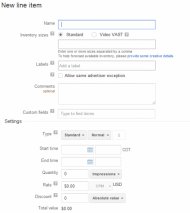The process of uploading all details of a display ad campaign to an ad serving platform.
Trafficking in Depth
This term is relevant to sites who are attempting to monetize their web traffic by selling ads directly. Trafficking occurs once a proposal has been accepted and an IO has been signed. This process basically involves setting up each individual line item in the relevant ad serving platform, uploading creative, and performing any verification required to ensure that everything will be functioning properly once the campaign begins.
Trafficking Responsibilities
Trafficking can be used to refer to responsibilities on both the advertiser (or agency) side as well as the publisher. The agency component of the trafficking process typically involves:
- Incorporating or identifying click-thru URLs for ads
- Naming ad files or tags
- Uploading or sending to publisher
The ultimate deliverable from this process is a file or group of files containing all the digital assets needed to run the campaign.
Once the publisher receives this data from the advertiser, there are a number of tasks that must be performed on that end:
- Inserting macros into creative files where appropriate
- Testing ads to confirm proper appearance and functionality.
This involves some manual work in ad ad serving platform, such as DFP:

It is somewhat common for the trafficking process to involve some back-and-forth between publishers and advertisers / agencies to confirm that the set-up of the ads in the serving platform matches what is specified by the IO and expected from both sides.
Larger publishers will generally have a person or multiple team members dedicated to trafficking. For smaller publishers or entrepreneurs, this responsibility may fall to the sales reps or be passed on to other roles.











